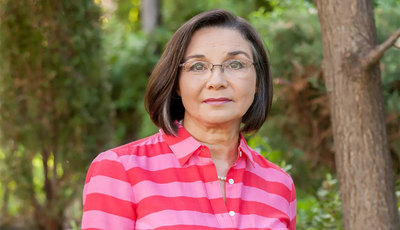Feels like home

While they look, smell and feel like a home, they’re actually an aged-care residence, specialising in residents suffering from dementia. Group Homes Australia founder and CEO Tamar Krebs talks about her unique model of aged care.
As a child, Tamar Krebs was by her great-grandfather’s side as he completed his life journey, surrounded by family and friends; his final words to her, “I love you, doll”, imprinted on her memory, and stirring a passion to become a nurse.
Krebs grew up believing that when people die, they pass away at home with their loved ones by their side. It wasn’t until completing her nursing studies that she realised that this wasn’t the case, kindling a dream to create a residence for people with dementia that looks, feels and smells like a normal home.

Bringing a dream to life
Krebs worked in aged care for over 18 years, managing nursing homes and dementia units.
“I started to ask myself why we as a society feel the need to warehouse our elderly,” she said. “If we live our entire life in a community surrounded by friends and family then why, at a person’s most vulnerable point in their life, do we lock them away from society and their familiar suburb. Why do we focus on their disability?”
This inspired her search for a solution that would allow people to age in a home that looks, feels and smells like a home in a person’s familiar suburb.
In 2012, Kreb’s dream became a reality when she established the first of a series of group homes in St Ives, NSW. The homes have no logos or signs and they are set up to be just that — homes. They blur into the leafy suburb and street, a haven where residents can live with dignity and respect, and where families feel they are simply visiting their loved one at home.

Unique design
Krebs ensures that all Group Homes Australia residences are nestled within local communities that are familiar to residents and their families.
The homes are designed with an open internal layout with multiple breakaway spots to allow residents to enjoy respite while in full view of staff and other residents, encouraging socialisation.
The home looks like a traditional home but has discreet modifications such as recessed rugs into the floor to reduce trip hazards, no raised racks for sliding doors, dark tiles in the bathrooms with a bright white toilet. Indoor design and decor feature period-sensitive times. Designs include large clocks, vases, sturdy wooden furniture, encyclopedias and so forth.
Residents can bring their pets, grandchildren can visit, and the residents’ bedrooms are filled with photographs and sentimental memorabilia to make them feel at home. One resident even brought his greenhouse with him.

Experiencing life
Residents can choose to eat together at one of the homely dining areas or alone in their rooms if they choose to do so. They can continue to experience normal life, enjoying tasks like cooking or baking, visiting the local shops to purchase ingredients for a favourite recipe, assisting with hanging washing on the line, gardening and even hosting a BBQ with assistance. Tasks are broken down into manageable steps.

However, in addition to normal home life there are organised outings and activities, such as to local beaches, parks, concerts and to local preschools, where both the residents and the children benefit from the interaction. There is yoga on offer, they can listen to meaningful music on iPods, play card games, do puzzles and do crafts. Children from local schools visit to sing and read with the residents.
Dementia advocate’s perspective
Dementia advocate who has been diagnosed with young onset dementia Kate Swaffer recently visited three GHA homes. She was overwhelmed and grateful to Krebs for bringing such a compassionate and nurturing ‘residential care home’ to Australia.
“I definitely had no sense I was visiting a ‘facility providing residential care’,” Swaffer said. “There were people in rooms folding up the washing, staff and residents in the kitchen preparing meals, smells of cooking and not a hint of urine.
“Doors that opened out onto gardens and recreational areas, with washing lines, and one even with a swimming pool. Laundries in working order, various areas to sit and relax or play cards or watch television.
“This is the first time, and only time, I have felt I would or could move into ‘residential care’. As a person living with a diagnosis of dementia, I cannot tell you how much of a relief it felt to see someone who ‘gets’ it... following their intuition, their heart, and actually ‘doing it’ so well.”

For more information about Group Homes Australia, visit: www.grouphomes.com.au.
Fundamental reimagining: new Sydney Children's Hospital, Randwick
The new Sydney Children's Hospital, Randwick, was designed as a fundamental reimagining of...
UNSW Health Translation Hub opens
The $600 million UNSW Health Translation Hub — an integrated medical, research and health...
Vertical healing: redefining health care through high-rise hospital design
The high-rise hospital signifies more than a shift in form — it reflects a transformation...




![[New Zealand] Transform from Security Awareness to a Security Culture: A Vital Shift for SMB Healthcare — Webinar](https://d1v1e13ebw3o15.cloudfront.net/data/89856/wfmedia_thumb/..jpg)
![[Australia] Transform from Security Awareness to a Security Culture: A Vital Shift for SMB Healthcare — Webinar](https://d1v1e13ebw3o15.cloudfront.net/data/89855/wfmedia_thumb/..jpg)




